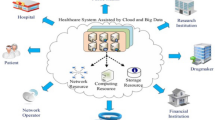Summary
The DRG classification provides a useful tool for the evaluation of hospital care. Indicators such as readmissions and mortality rates adjusted for the hospital Casemix could be adopted in Switzerland at the price of minor additions to the hospital discharge record. The additional information required to build patients histories and to identify the deaths occurring after hospital discharge is detailed.
Résumé
La classification par DRG représente un instrument utile pour l'évaluation des soins hospitaliers. Des indicateurs tels que les taux de réadmissions ou de mortalité ajustés pour le Casemix de l'hôpital pourraient être adoptés en Suisse au prix d'adjonctions mineures au résumé de sortie. L'information minimale supplémentaire requise pour reconstruire l'histoire des patients et pour identifier les décès après sortie de l'hôpital est détaillée.
Zusammenfassung
Die DRG-Klassifikation ist ein nützliches Instrument zur Evaluation der Spitalbetreuung. In der Schweiz könnten Indikatoren — wie für die Patientenzusammensetzung standardisierte Wiedereinweisungsziffern oder Sterbeziffern—durch kleine Aenderungen der Spitalentlassungsformulare für eine solche Evaluation gewonnen werden. Der Artikel zeigt, welche zusätzlichen Informationen mindestens benötigt werden, um Krankengeschichten so zu ergänzen, dass Todesfälle auch nach der Spitalentlassung identifiziert werden können.
Similar content being viewed by others
References
Lembcke PA. Evolution of the medical audit. JAMA 1967;199: 111–8.
Hornbrook MC. Hospital Casemix: Its definition, measurement and use. Med Care Rev 1982;19: 1–123.
Fetter RB, Shin Y, Freeman JL, Averill RF, Thompson JD. Casemix definition by Diagnosis Related Groups. Med Care 1980,18 (2, Suppl): 1–53.
Levit KR, Lazenby H, Waldo DR, Davidoff LM. National health expenditures, 1984. Health Care Financ Rev 1985;7: 1–34.
Stern RS, Epstein AM. Institutional responses to prospective payment based on diagnosis-related groups. Implications for cost, quality, and access. N Engl J Med 1985;312: 621–7.
Iglehart JK. Early experience with prospective payment of hospitals. N Engl J Med 1986;314: 1460–4.
Weiner SL, Maxwell JH, Sapolski HM, Dunn DC, Hsiao WC. Economic incentives and organizational realities: Managing hospitals under DRGs. Milbank Q 1987;65: 463–87.
Blumberg MS. Comments on HCFA hospital death rate statistical outliers. Health Serv Res 1987;2116: 715–39.
Brook RH, Lohr KN. Monitoring the quality of care in the Medicare program. Two Proposed Systems. JAMA 1987;258: 3138–41.
Desharnais S, Chesney J, Fleming S. Trends and regional variations in hospital utilization and quality during the first two years of the prospective payment system. Inquiry 1988;25: 374–82.
Dubois RW, Brook RH, Rodgers WH. Adjusted hospital death rates: A potential screen for quality of medical care. Am J Public Health 1987;77: 1162–6.
Desharnais SI, Chesney JD, Wroblewski RT, Fleming MA, McMahon LF. The risk-adjusted mortality index. A new measure of hospital performance. Med Care 1988;26: 1129–48.
Mortenson N. Wide variations in surgical mortality. Standard definition needed for postoperative mortality. Br Med J 1989;298: 344–5.
Jencks SF, Williams DK, Kay TL. Assessing hospital-associated deaths from discharge data. The role of length of stay and comorbidities. JAMA 1988;260: 2240–6.
Abelin T, Ehrengruber H, Fahrni U, Minder C, Patil S, Spuhler T. Interdisziplinäre Auswertung der VESKA-Spitaldiagnosen- und Operationsstatistik 1980–1984. Schlussbericht des NF-Projektes Nr. 3.872-079. Bern, Institut für Sozial- und Präventivmedizin, 1984.
Abelin T, Berweger P. Epidemiologische Auswertung der Medizinischen Statistik VESKA (Schlussbericht des National-fonds-Projekt Nr. 3.936-0.85). Bern, Institut für Sozial- und Präventivmedizin, 1987.
Baldwin JA, Acheson ED, Graham WJ. Textbook of medical record linkage. New York: Oxford University Press, 1987.
Berweger P. Trends der Spitalmorbidität und -Letalität des akuten Myokardinfarkts in der Schweiz. Inaugural-Dissertation zur Erlangung der Doktorwürde der Medizinischen Fakultät Bern, 1988.
Office fédéral de la statistique. Poids de naissance et mortalité infantile en Suisse. 1979–1981. Berne: OFS, 1985 (Contributions à la statistique suisse, 126e fasc).
Newcombe HB. Handbook of record linkage. Methods for health and statistical studies, administration, and business. Oxford, New York, Tokyo: Oxford University Press, 1988.
Blanc T, Bréaud P, Delorme P, Tinturier G. Planification des lits du CHUV. Rapport no 2: Caractéristiques et indicateurs d'utilisation. Lausanne, Service de la santé publique et de la planification sanitaire, 1988, 27 p.
Kind P. Hospital deaths—The missing link: Measuring outcome in hospital activity data. Center for Health Economics, Health Economics Consortium, Discussion paper 44, University of York, 1988, 28 p.
Workshop on Hospital Statistics for Population-based Health Care and Epidemiology, Commission of the European Communities. Recommendations for hospital statistics in Europe. Proceedings. Amsterdam: North-Holland, 1982: 185–7.
Roger FH. The minimum basic data set for hospital statistics in the EEC. In: Lambert PM, Roger FH, eds. Hospital Statistics in Europe. Proceedings of the Workshop on Hospital Statistics for Population-based Health Care and Epidemiology: Role of the Minimum Basic Data Set, Commission of the European Communities. Amsterdam: North-Holland, 1982: 83–112.
Groupe d'étude Casemix. Recommandations concernant les données de routine dans les hôpitaux de soins généraux. In: Paccaud F, Schenker L, D. R. G. (Diagnosis Related Groups). Perspectives d'utilisation. Lyon: Lacassagne, 1989.
Kahn KL, Brook RH, Draper D, Keeler EB, Rubenstein LU, Rogers WH, Kosecoff J. Interpreting hospital mortality data. How can we proceed? JAMA 1988;260: 3625–8.
Goldacre MJ, Clarke JA, Heasman MA, Vessey MP. Follow-up of vasectomy using medical record linkage. Am J Epidemiol 1978;108: 176–80.
Author information
Authors and Affiliations
Rights and permissions
About this article
Cite this article
Santos-Eggimann, B., Paccaud, F. Minimal data requirements for a continuous monitoring of the quality of care using the DRG classification. Soz Präventivmed 34, 188–191 (1989). https://doi.org/10.1007/BF02080410
Published:
Issue Date:
DOI: https://doi.org/10.1007/BF02080410




